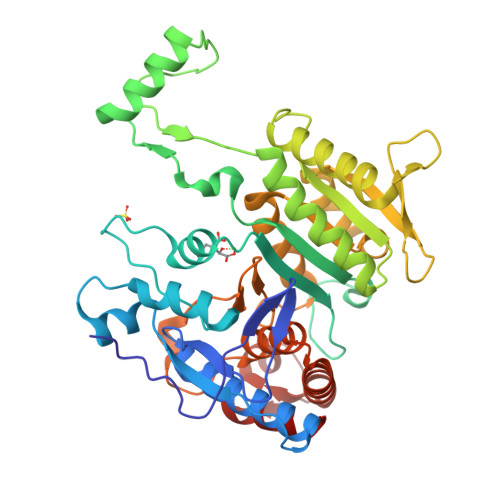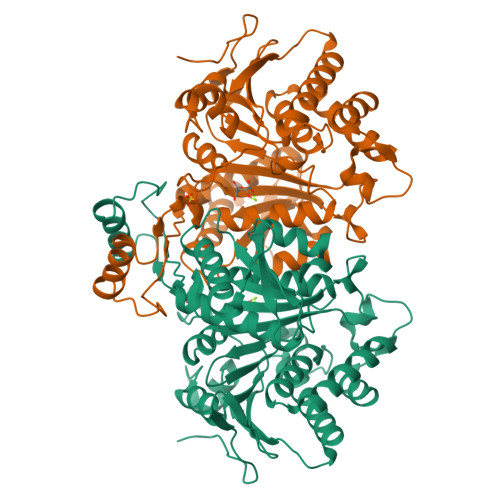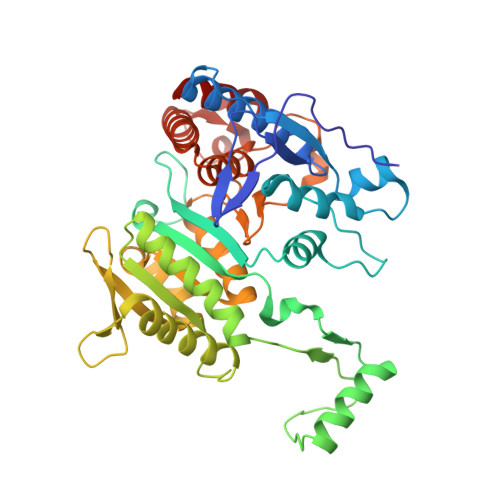Evolution of a Transition State: Role of Lys100 in the Active Site of Isocitrate Dehydrogenase.
Miller, S.P., Goncalves, S., Matias, P.M., Dean, A.M.(2014) Chembiochem 15: 1145
- PubMed: 24797066
- DOI: https://doi.org/10.1002/cbic.201400040
- Primary Citation of Related Structures:
4BNP - PubMed Abstract:
An active site lysine essential to catalysis in isocitrate dehydrogenase (IDH) is absent from related enzymes. As all family members catalyze the same oxidative β-decarboxylation at the (2R)-malate core common to their substrates, it seems odd that an amino acid essential to one is not found in all. Ordinarily, hydride transfer to a nicotinamide C4 neutralizes the positive charge at N1 directly. In IDH, the negatively charged C4-carboxylate of isocitrate stabilizes the ground state positive charge on the adjacent nicotinamide N1, opposing hydride transfer. The critical lysine is poised to stabilize-and perhaps even protonate-an oxyanion formed on the nicotinamide 3-carboxamide, thereby enabling the hydride to be transferred while the positive charge at N1 is maintained. IDH might catalyze the same overall reaction as other family members, but dehydrogenation proceeds through a distinct, though related, transition state. Partial activation of lysine mutants by K(+) and NH4 (+) represents a throwback to the primordial state of the first promiscuous substrate family member.
Organizational Affiliation:
Biotechnology Institute, The University of Minnesota, 1479 Gortner Avenue, St. Paul, MN 55108 (USA).





















